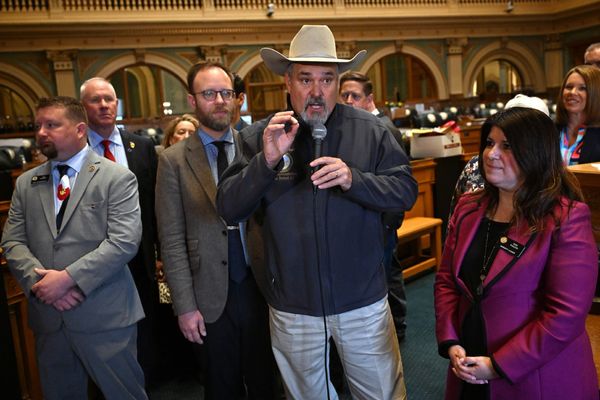
High-risk offenders including a domestic abuser who posed a risk to children have been freed from jail under the government’s early release scheme, a watchdog has revealed.
Charlie Taylor, the chief inspector of prisons, said the Ministry of Justice’s plan to relieve the pressure in overcrowded jails raised “serious concerns” and had undermined safety and risk management.
The disclosure comes amid accusations that the justice secretary, Alex Chalk, has broken a pledge that the scheme would only apply to “low-level offenders”.
In a report published on Tuesday, Taylor said a “high-risk” inmate at HMP Lewes who posed a danger to children had his release date brought forward despite “having a history of stalking, domestic abuse and being subject to a restraining order”.
Another high-risk prisoner with significant class A drug use issues and a recent history of suicidal thoughts and self-harm was released from the segregation unit into homelessness, despite appeals for the decision to be reversed and staff having serious concerns for his and the public’s safety.
Concerns emerged from an inspection at the East Sussex jail carried out in February, shortly after the scheme was brought into force. Inspectors uncovered major problems with drugs, violence and self-harm at the category B Victorian prison, the report said.
The government’s early release scheme was designed to relieve the pressure in overcrowded jails. It initially involved inmates having their sentences cut by up to 18 days. That was increased to between 35 and 60 days in March and will rise again from 23 May to 70 days.
Taylor said: “The need to release offenders early to free up space in our jails is a further sign of the pressure that our prison service is under, with local leaders having to make difficult choices as the day we run out of places draws closer.
“The current situation was entirely predictable and is simply not sustainable, for either the prison or probation service. Although some of these issues may, I hope, reduce as the scheme embeds, more fundamentally, an urgent conversation is needed about who we send to prison, for how long, and what we want to happen during their time inside.”
Shabana Mahmood, the shadow justice secretary, said the government has attempted to “cover up” the prisoner early release scheme and it was now unravelling.
“The public will rightly be worried to hear of cases where violent prisoners are being released without a proper assessment of the risk they pose to the public, and specifically children,” she said. “It’s being left to prison inspectors to tell the public the truth because this government is refusing to level with them on the scale of the prisons and probation crisis.”
Andrea Coomber, the chief executive of the Howard League for Penal Reform, said: “It is imperative that the government publishes data on the early release scheme’s operation and makes a commitment to transparency as a matter of urgency. While action to ease pressure on jails is necessary, this temporary measure is no substitute for what is really needed: a more sensible response to crime that puts fewer people behind bars and more money into services that can help them.”
Chalk issued a statement in March saying the early release scheme would “only be for certain low-level offenders”.
A Ministry of Justice spokesperson said: “While we will always ensure there is enough capacity to keep dangerous offenders behind bars, this scheme allows us to ease short-term pressures on prisons by moving some lower-level offenders at the end of their custodial term on to licence.
“These offenders will continue to be supervised under strict conditions such as tagging and curfews, and the prison service can block the earlier release of any individual who poses a heightened risk.”







